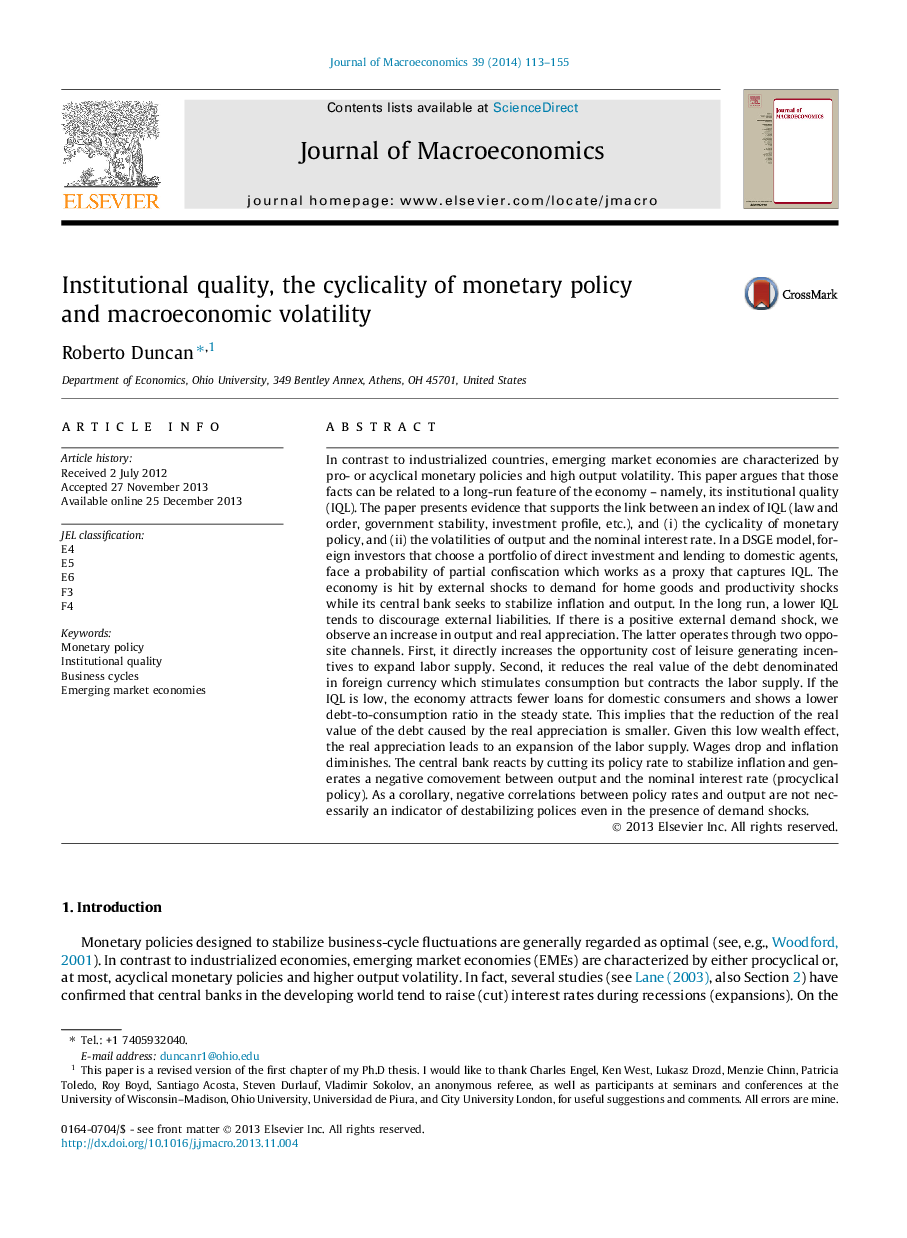| Article ID | Journal | Published Year | Pages | File Type |
|---|---|---|---|---|
| 964919 | Journal of Macroeconomics | 2014 | 43 Pages |
•Monetary-policy cyclicality is statistically related to institutional quality (IQL).•We model foreign investors facing a probability of confiscation (IQL proxy).•Lower IQL affects transmission mechanism of external shocks.•Demand shocks imply negative (+) output-interest comovement under low (high) IQL.•Negative output-interest correlations do not necessarily indicate destabilizing policies.
In contrast to industrialized countries, emerging market economies are characterized by pro- or acyclical monetary policies and high output volatility. This paper argues that those facts can be related to a long-run feature of the economy – namely, its institutional quality (IQL). The paper presents evidence that supports the link between an index of IQL (law and order, government stability, investment profile, etc.), and (i) the cyclicality of monetary policy, and (ii) the volatilities of output and the nominal interest rate. In a DSGE model, foreign investors that choose a portfolio of direct investment and lending to domestic agents, face a probability of partial confiscation which works as a proxy that captures IQL. The economy is hit by external shocks to demand for home goods and productivity shocks while its central bank seeks to stabilize inflation and output. In the long run, a lower IQL tends to discourage external liabilities. If there is a positive external demand shock, we observe an increase in output and real appreciation. The latter operates through two opposite channels. First, it directly increases the opportunity cost of leisure generating incentives to expand labor supply. Second, it reduces the real value of the debt denominated in foreign currency which stimulates consumption but contracts the labor supply. If the IQL is low, the economy attracts fewer loans for domestic consumers and shows a lower debt-to-consumption ratio in the steady state. This implies that the reduction of the real value of the debt caused by the real appreciation is smaller. Given this low wealth effect, the real appreciation leads to an expansion of the labor supply. Wages drop and inflation diminishes. The central bank reacts by cutting its policy rate to stabilize inflation and generates a negative comovement between output and the nominal interest rate (procyclical policy). As a corollary, negative correlations between policy rates and output are not necessarily an indicator of destabilizing polices even in the presence of demand shocks.
